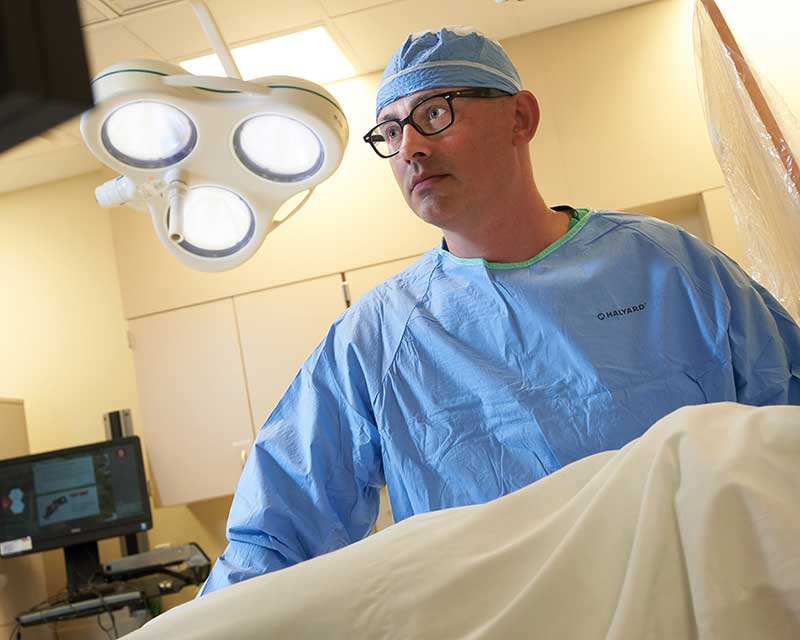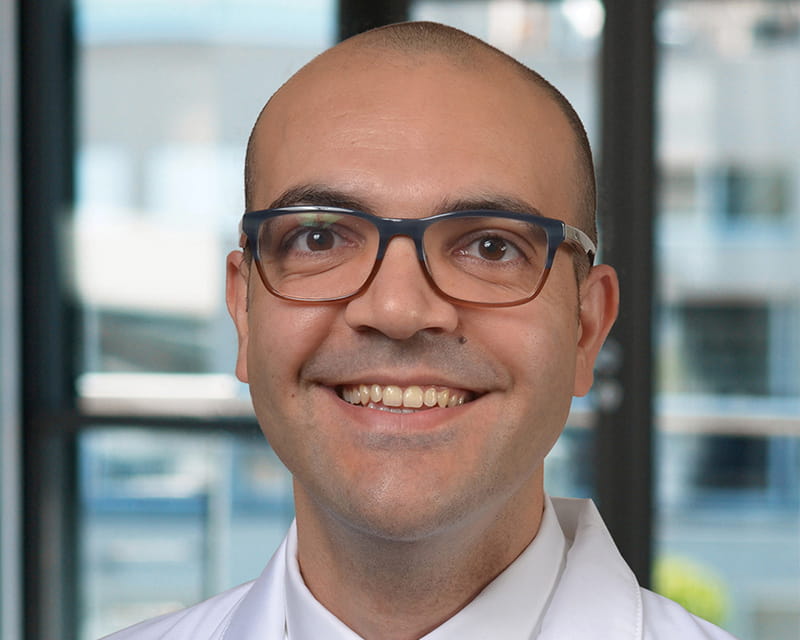
Ohio State is among a handful of elite U.S. medical centers with the expertise necessary to identify and cure CTEPH, a life-threatening form of pulmonary hypertension.
At The Ohio State University Wexner Medical Center, a diverse team of highly specialized pulmonologists, cardiologists and cardiothoracic surgeons treat and often cure chronic thromboembolic pulmonary hypertension (CTEPH).
CTEPH refers to chronic clots that block the major pulmonary arteries. These often - undiagnosed clots result in a significant elevation in the pulmonary artery pressures that lead to right heart failure and death.
“If pulmonary artery pressure is severely elevated at the time of diagnosis, a patient’
s two-year survival rate without treatment is less than 20%,” says Shaun Smith, DO, assistant professor in Ohio State’s Division of Pulmonary, Critical Care and Sleep Medicine, and co-director of the pulmonary hypertension program.
CTEPH incidence is likely underestimated
While some estimates suggest 8,000 to 9,000 Americans develop CTEPH annually, experts believe the true incidence is probably higher because many people with this condition remain undiagnosed.
“While we know that people who have had pulmonary emboli are at risk for developing CTEPH, anyone can get it,” Dr. Smith says. “As many as 30% of people with CTEPH are otherwise healthy, with no known history of clots.”
CTEPH patients require rapid referrals, prompt treatments
Patients with symptoms of shortness of breath, fatigue, lightheadedness, edema and syncope who are found to have increased pulmonary pressures on an echocardiogram or right heart catheterization are referred to Ohio State’s pulmonary hypertension program. There, pulmonologists like Dr. Smith obtain lung ventilation-perfusion scans (lung V/Q scans) to detect clots that hide in the pulmonary arteries and prevent adequate blood flow to the lungs. Patients with CTEPH are evaluated for three treatment options: medical, surgical or minimally invasive pulmonary balloon angioplasty.
“For CTEPH patients who are surgical candidates, the gold standard treatment is pulmonary thromboendarterectomy, or PTE,” Dr. Smith says. “We’re one of the only health systems in the Midwest to offer PTE, which is a highly specialized procedure that allows our cardiothoracic surgeons to remove the clots while the heart is stopped. The surgery is curative in more than 90% of patients.”
Dr. Smith and his colleague
Cindy Baker, MD, an Ohio State interventional cardiologist, also offer balloon pulmonary angioplasty, a procedure for patients who are not eligible for open heart surgery. The procedure, which involves inflating a balloon in the pulmonary arteries that are occluded with chronic blood clots, can reduce pulmonary artery pressure and help relieve right heart strain - thereby improving patients’ functional status.
Although few medications are approved to treat CTEPH, Ohio State researchers are studying new drugs that may help people who aren’t candidates for surgery. Patients have unique access to clinical trials, including an active study to investigate if medications used to treat other forms of pulmonary hypertension may also benefit those with CTEPH. Alternative chemical pathways that contribute to pulmonary hypertension are also being studied.
Improving CTEPH diagnosis and treatment
Dr. Smith says the medical community should be aware of CTEPH, as delayed diagnosis and treatment have a marked impact on survival.
“It’s important to screen every pulmonary hypertension patient for CTEPH,” he adds. “Physicians should also consider CTEPH in any patient who has had a previous or recurrent pulmonary embolism and develops shortness of breath.”
To refer a patient for CTEPH evaluation or treatment at Ohio State, please call 614-908-2763.
Learn more about innovations in care and research from the Division of Pulmonary, Critical Care and Sleep Medicine.

